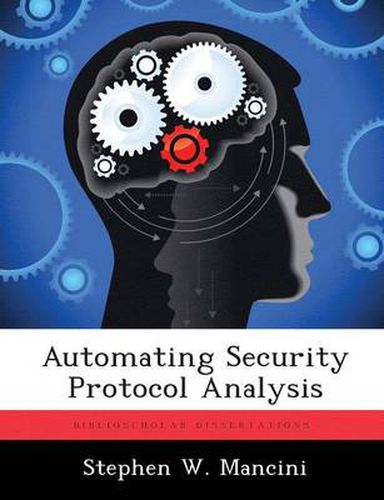Readings Newsletter
Become a Readings Member to make your shopping experience even easier.
Sign in or sign up for free!
You’re not far away from qualifying for FREE standard shipping within Australia
You’ve qualified for FREE standard shipping within Australia
The cart is loading…






This title is printed to order. This book may have been self-published. If so, we cannot guarantee the quality of the content. In the main most books will have gone through the editing process however some may not. We therefore suggest that you be aware of this before ordering this book. If in doubt check either the author or publisher’s details as we are unable to accept any returns unless they are faulty. Please contact us if you have any questions.
When Roger Needham and Michael Schroeder first introduced a seemingly secure protocol [24], it took over 18 years to discover that even with the most secure encryption, the conversations using this protocol were still subject to penetration. To date, there is still no one protocol that is accepted for universal use. Because of this, analysis of the protocol outside the encryption is becoming more important. Recent work by Joshua Guttman and others [9] have identified several properties that good protocols often exhibit. Termed Authentication Tests , these properties have been very useful in examining protocols. The purpose of this research is to automate these tests and thus help expedite the analysis of both existing and future protocols. The success of this research is shown through rapid analysis of numerous protocols for the existence of authentication tests. The result of this is that an analyst is now able to ascertain in near real-time whether or not a proposed protocol is of a sound design or whether an existing protocol may contain previously unknown weaknesses. The other achievement of this research is the generality of the input process involved. Although there exist other protocol analyzers, their use is limited primarily due to their complexity of use. With the tool generated here, an analyst needs only to enter their protocol into a standard text file; and almost immediately, the analyzer determines the existence of the authentication tests.
$9.00 standard shipping within Australia
FREE standard shipping within Australia for orders over $100.00
Express & International shipping calculated at checkout
This title is printed to order. This book may have been self-published. If so, we cannot guarantee the quality of the content. In the main most books will have gone through the editing process however some may not. We therefore suggest that you be aware of this before ordering this book. If in doubt check either the author or publisher’s details as we are unable to accept any returns unless they are faulty. Please contact us if you have any questions.
When Roger Needham and Michael Schroeder first introduced a seemingly secure protocol [24], it took over 18 years to discover that even with the most secure encryption, the conversations using this protocol were still subject to penetration. To date, there is still no one protocol that is accepted for universal use. Because of this, analysis of the protocol outside the encryption is becoming more important. Recent work by Joshua Guttman and others [9] have identified several properties that good protocols often exhibit. Termed Authentication Tests , these properties have been very useful in examining protocols. The purpose of this research is to automate these tests and thus help expedite the analysis of both existing and future protocols. The success of this research is shown through rapid analysis of numerous protocols for the existence of authentication tests. The result of this is that an analyst is now able to ascertain in near real-time whether or not a proposed protocol is of a sound design or whether an existing protocol may contain previously unknown weaknesses. The other achievement of this research is the generality of the input process involved. Although there exist other protocol analyzers, their use is limited primarily due to their complexity of use. With the tool generated here, an analyst needs only to enter their protocol into a standard text file; and almost immediately, the analyzer determines the existence of the authentication tests.